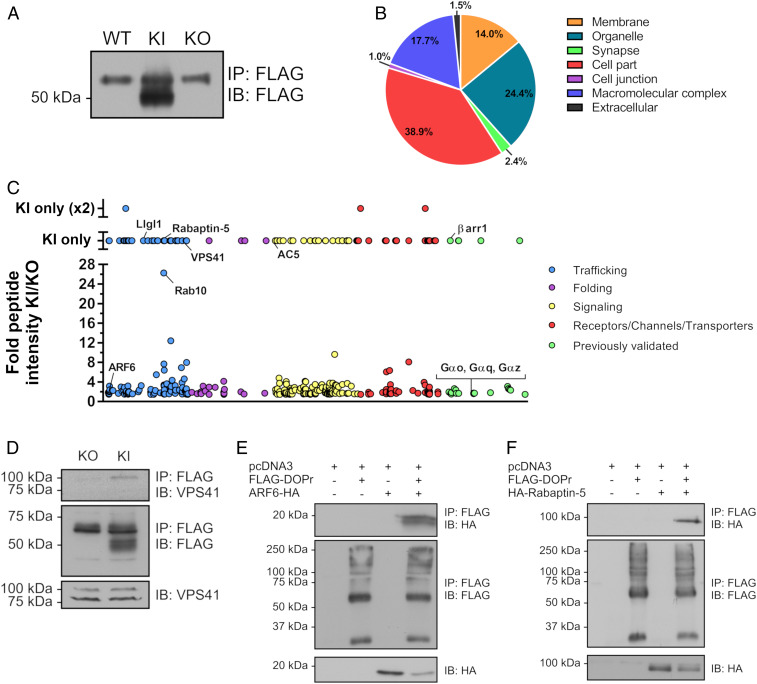Fig. 4.
Identification of potential DOPr-interacting proteins from brains of FLAG-DOPr-KI mice. (A) Immunoprecipitation of FLAG-DOPr (∼50-kDa band) was performed on forebrain lysates from WT, KI, and KO mice using a M2 mouse monoclonal anti-FLAG antibody immobilized on magnetic beads. Immunoblotting was carried out using a rabbit polyclonal anti-FLAG antibody. Following LC-MS/MS analysis of immunoprecipitated FLAG-DOPr from the forebrain of KI mice, identified DOPr-interacting proteins were classified according to their cellular localization using the PANTHER Classification System online tool (B) and reported molecular functions covering intracellular trafficking (blue), folding (purple), signal transduction (yellow), and proteins belonging to the receptor/channel/transporter families (red) (C). Previously reported DOPr interactors are identified in green (C). In order to validate an endogenous interaction, immunoprecipitation of FLAG-DOPr from brain lysates of KO and KI mice was carried out using a M2 mouse monoclonal anti-FLAG antibody immobilized on magnetic beads and immunoblotting was performed using a rabbit polyclonal anti-VPS41 antibody (D). Further validation of DOPr-interacting proteins was assessed in lysates of HEK293 cells transiently expressing the human FLAG-DOPr and (E) ARF6-HA or (F) HA-Rabaptin-5 using a M2 mouse monoclonal anti-FLAG antibody. Immunoblotting of the receptor was carried out with FLAG-specific rabbit polyclonal antibody (D–F), and ARF6-HA and HA-Rabaptin-5 were immunoblotted using HA-specific HRP-conjugated antibodies. (A and D–F) Blots shown are representative of at least three independent experiments. IB, immunoblotting; IP, immunoprecipitation.

